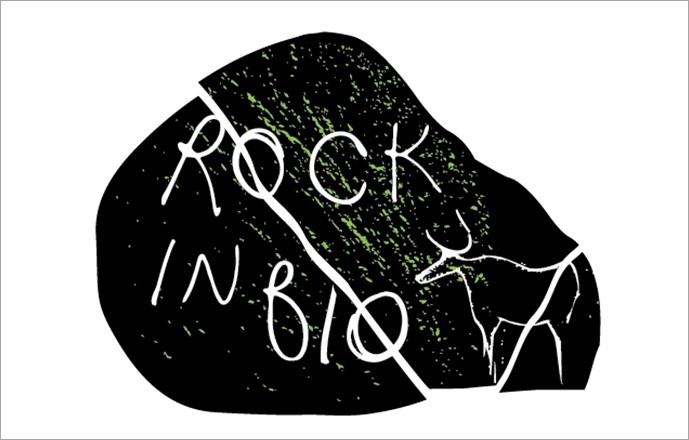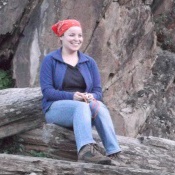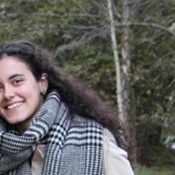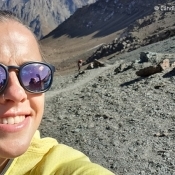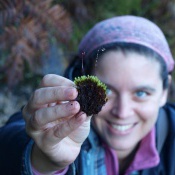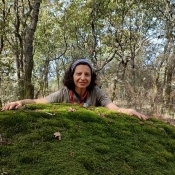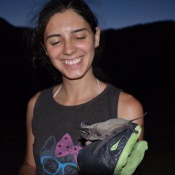ROCKinBIO - A biodeterioration model to predict biological impact on exposed rock surfaces and open-air rock-art
The Côa rock art, inscribed in the UNESCO World Heritage List, is preserved on hundreds of rock surfaces spreading along the steep slopes of the Côa river valley and a portion of the Douro, next to Côa’s mouth. These surfaces, and associated art, are continuously exposed to and shaped by the synergistic impacts of several biotic and abiotic agents, that are still largely understudied.
Since most rock art is superficial and deterioration of the rock surface can easily erase the motifs, biological colonisation on open-air rock art is usually thought to pose a major conservation threat. However, given the complexity of the interactions between weathering processes and the fact that we are still largely ignorant about the ecological aspects of rock colonisation, biological contribution to rock surface weathering is difficult to isolate and quantify. The possibility of a bioprotective action of biological colonisation against other weathering agents should also be considered, adding complexity to the ongoing debate on the million-dollar question in the field of conservation science – to clean or not to clean?
Focusing on the exposed rock surfaces of the Côa Valley, this project will apply state-of-the-art ecological modelling and remote sensing tools to:
1) Characterise whole rock-colonising communities, their abundance, indicator traits and distribution patterns;
2) Characterise the multi-scalar environmental drivers of rock colonisation dynamics;
3) Quantify the geochemical and geophysical impact of rock-colonising communities on exposed rock surfaces, linking biodiversity to function.
The final goal is to develop a predictive biodeterioration model that allows to diagnose current interactions between biological colonisation and colonised rock surfaces, and anticipate future impact of these processes on open-air rock art conservation.
Team
Principal Investigator
Researchers
Other members
Ana Zélia Miller (co-PI) (HERCULES Laboratory, University of Évora); Ana Teresa Caldeira (HERCULES Laboratory, University of Évora); Heather Viles (School of Geography and the Environment, University of Oxford); Thierry Aubry (Fundação Côa Parque); Joana Barros (Associação Viver Ciência); António Valente (University of Trás-os-Montes e Alto Douro); Ana Briga de Sá (University of Trás-os-Montes e Alto Douro).
Ana Zélia Miller (co-PI) (HERCULES Laboratory, University of Évora); Ana Teresa Caldeira (HERCULES Laboratory, University of Évora); Heather Viles (School of Geography and the Environment, University of Oxford); Thierry Aubry (Fundação Côa Parque); Joana Barros (Associação Viver Ciência); António Valente (University of Trás-os-Montes e Alto Douro); Ana Briga de Sá (University of Trás-os-Montes e Alto Douro).
State
Ongoing
Proponent Institution
Associação BIOPOLIS (CIBIO-InBIO)
Funded by
Fundação para a Ciência e a Tecnologia (FCT)
Dates
2023 (Duration: 3 years)
Reference
2022.04830.PTDC
